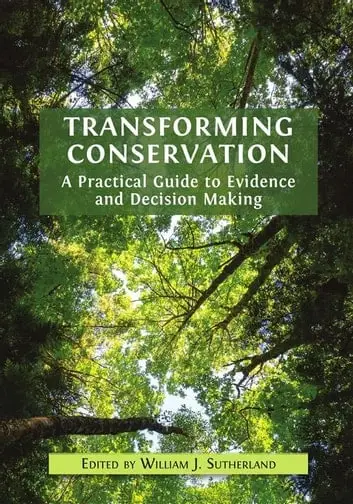Transforming Conservation

Tranforming Conservation
A Practical Guide to Evidence and Decision Making
Edited by William J. Sutherland
The future of nature is in our hands. In a world that is increasingly facing the effects of climate change and environmental destruction, it is more important now than ever before to take steps to protect our planet. This new book, edited by William J. Sutherland, outlines a comprehensive approach to transforming the way conservation decisions are made by focusing on evidence-based decision making.

1. The Need for Evidence-Based Decisions
The authors make the case for a strategic and cultural shift in the way conservation efforts are undertaken, suggesting that evidence should be synthesized and made available when and as needed to ensure decision makers have the necessary skills and tools to use it. They emphasize the need for greater transparency in the use of evidence and argue that this should be the norm, with not using evidence seen as unprofessional and inefficient.
2. Training the Next Generation
To achieve this, they propose the development of new skills such as finding and synthesizing evidence, interpreting, evaluating and combining evidence, using experts efficiently, working with diverse stakeholders, making decisions that incorporate values and costs, embedding evidence in plans and guidance, and creating tests to improve the evidence base. They offer some resources for training the next generation of decision makers in these skills and highlight the successes already achieved in other fields such as medicine and aviation safety.
3. A Cost Effective Approach
The authors make a strong case for the need to invest in evidence-based conservation, as it is likely to lead to more cost-effective delivery of policy and practice, and to improved credibility, making it easier to attract funders. They argue that this transition should be self-reinforcing, with recipients required to produce transparently collated evidence when applying for funds, and society at large demanding the use of evidence in decision making and the improvement of the evidence base where it is lacking.
4. Accountability to Funders
The authors discuss the commitments already made by philanthropists and funding bodies to improving effectiveness and suggest that if multiple influential funders require the consideration of the evidence, the effect could be rapid and substantial. The authors also emphasize that the processes they describe are applicable to many other fields and disciplines, from architecture and education to traffic management and research funding. They make a compelling case for evidence-based decision making in conservation and suggest that, if implemented, it could lead to a better planet.
